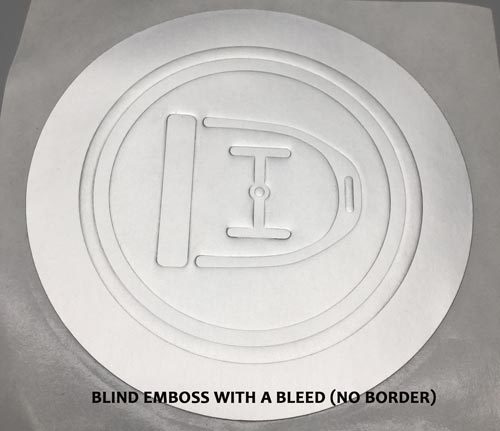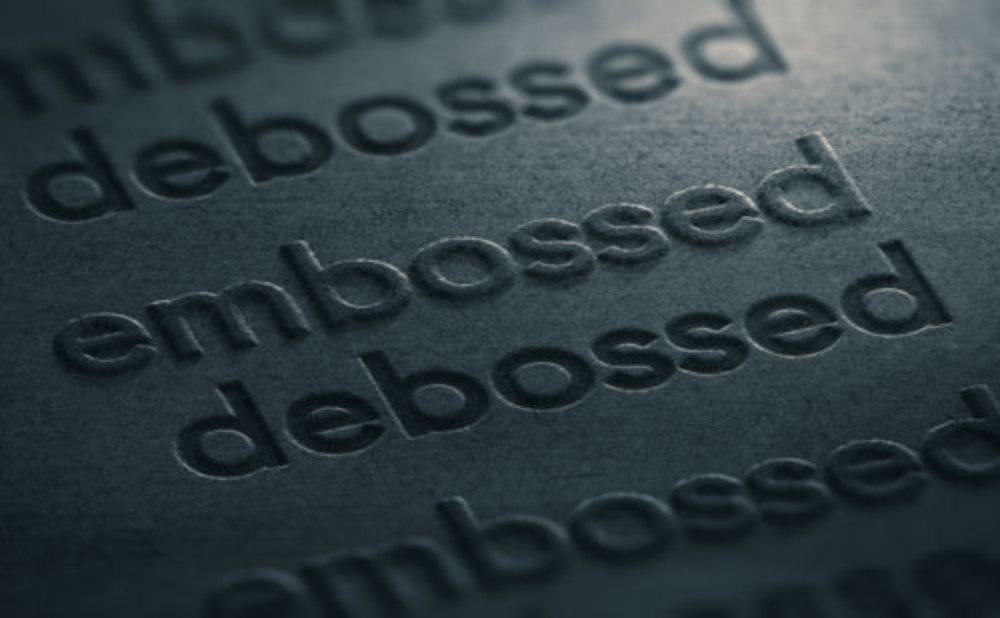Embossing Demystified
Custom embossed seals explained
Most people are familiar with the basic concept of embossing; it’s something you’ve likely encountered on a fancy stamp or stationary or felt on a coin in your pocket. The verb emboss means “to raise or represent surface designs in relief,” and this idea of creating art or print from an impression has been around for quite some time.
Originating from old world tradition and technology, embossed seals have endured the ages and are still relevant and popular today. Materials, applications and techniques have all changed, but the principle of designing in relief or recess (as in the case of debossing) remains the same. And yet, no other custom printed product causes more consternation for our clients than designing a custom embossed foil seal. Here we try to help clarify some of the more mystifying aspects of embossed seals.
Supplied Art
Nowadays we use modern tools, like graphic design software, to create the art that becomes the plate that presses against the foil to shape the imprint or embossment. It’s at this stage that embossed seals are perhaps the most mystifying because you need to look at a design on a flat art board and envision it in standing out from the screen.
As mentioned, it can be tricky to visualize a design in relief. A good place to start is to conceptualize your artwork in black and white. Not gray-scale with shading or gradients but reduced to pure black and white. Outline each object in your design, like text or lines and assign it either black or white. Understand that separate objects will need to be distinct for embossing. Will your design translate into black and white? Does it mean simplifying objects to the point that they are unrecognizable?
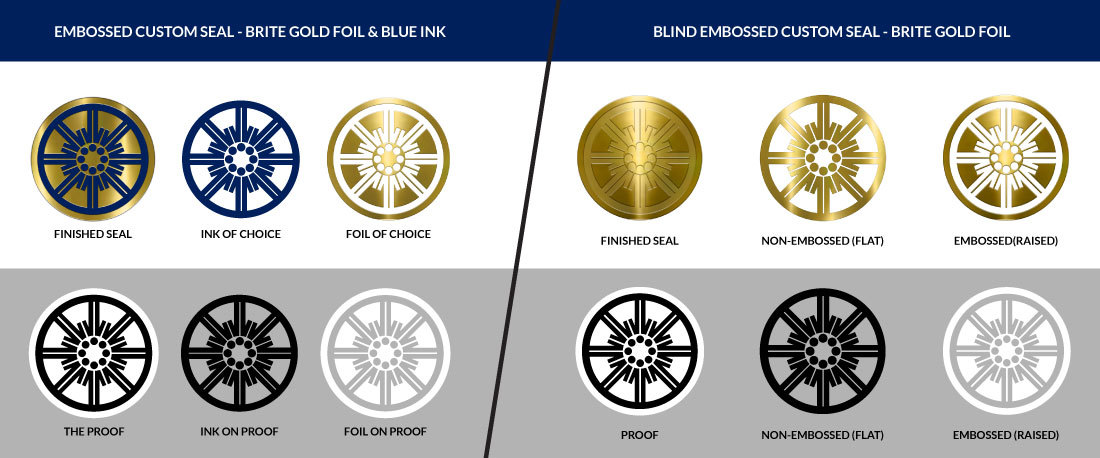
Examining a coin can also be helpful to envision your artwork on an embossed foil seal. A lot of detail can still be achieved if desired, but faces, landscapes and detailed illustrations must be economized if the design is to emboss clearly. It’s better to have fewer, bolder strokes as this will emboss more crisply and have a less cluttered look. Simple concepts make beautiful embossed seals.
Blind Emboss
A blind embossed seal has no ink added to it; it is simply the foil imprinted with a design. Perhaps a better way to think about it is that a clear or colorless ink is being used rather than no ink, because there are instances when a seal has both a blind embossed portion and an inked portion. In these cases, for the purposes of quoting and production, it qualifies as a two ink plate seal.
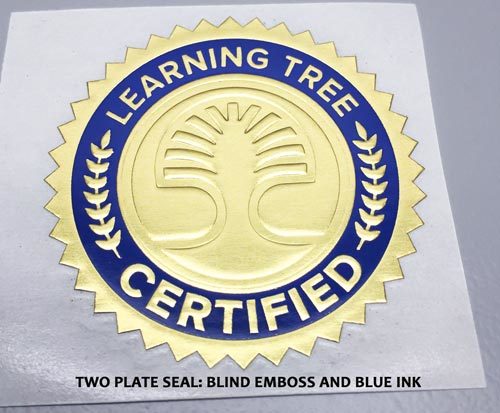
Debossing
Debossing is the opposite of embossing, so rather than the pattern being raised, it is sunken or recessed into the surface of the foil or other material creating a depression or indentation. At Sticky Business, ink is only applied to the recessed portions of the seal and it is the foil that is embossed.
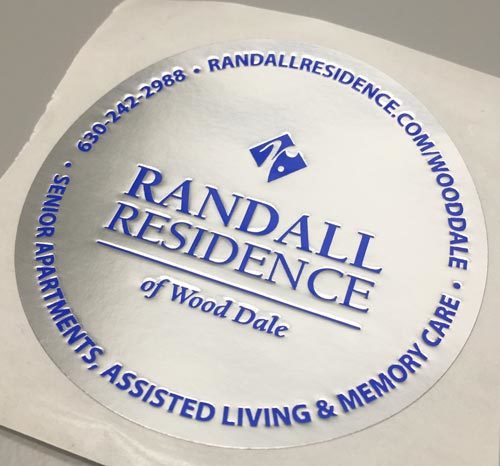
Borders and Bleed
A border is generally added to custom embossed seals, unless otherwise specified. If you prefer not to have the border, it’s called a bleed even if it’s a blind emboss or it's the flat foil that extends to the cutline. Normally a bleed refers to ink running past the edge of the label, but custom embossed seals are a class of label unto themselves!
